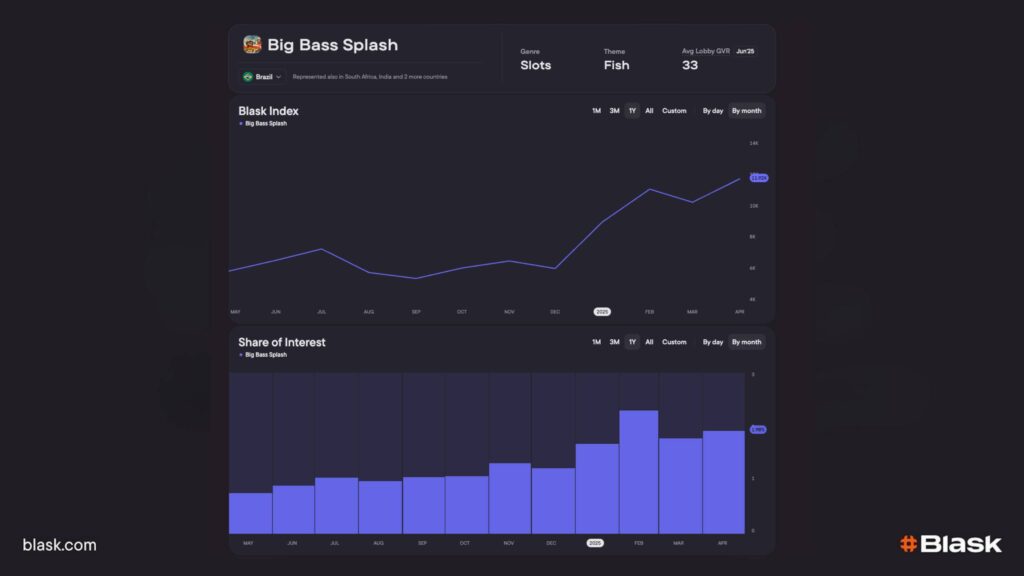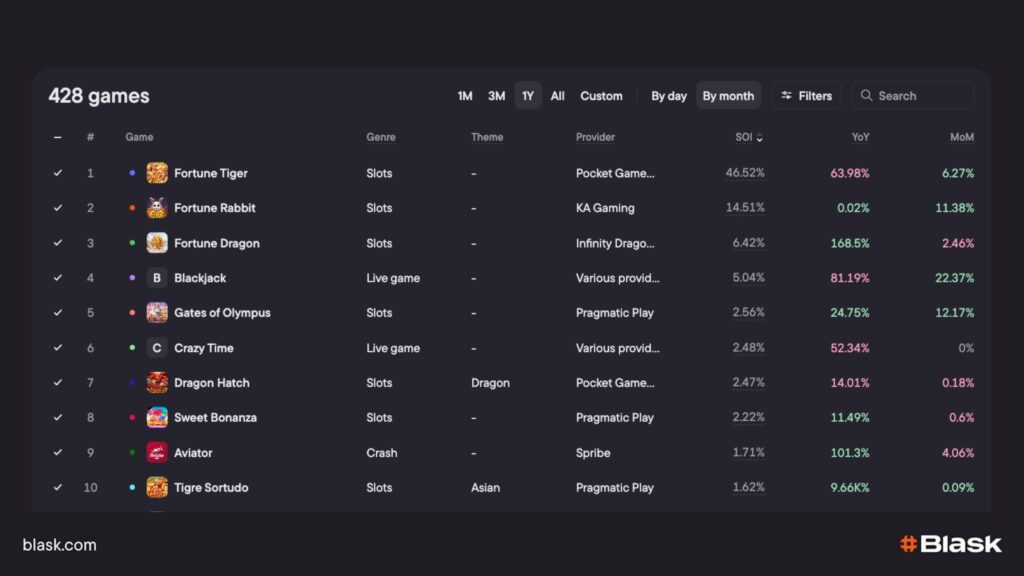Share of Interest (SoI)
Blask’s Share of Interest (SoI) tells you, for any given country and date, how much of the total game attention flows to one title — and how quickly that flow is changing.
Why the industry needed SoI.
Search data has always hinted at demand, but until Share of Search showed an 80-plus % correlation with future brand share it lacked board-level credibility. Blask lifts that logic into iGaming, mapping every game to a clean, localised keyword and weighting each query so “casino crash aviator” counts while “aviator jacket” is ignored.
The result is a demand barometer that moves when streamers hype a release, sponsorships land, or regulation shifts — long before revenue lines confirm it.

📌 Dive into: What is Blask Index.
From first query to final percentage.
From the very first keystroke in a player’s search bar to the neat percentage that flashes up in Blask Games, Share of Interest follows a straight-line story whose backbone is the Blask Index.
Blask Index is our iGaming-specific take on the “Share-of-Search” idea popularised by Les Binet and James Hankins.
Their work showed that tracking the proportion of category searches attached to each brand predicts future market share more accurately – and sooner – than sales reports do.
We extend the same logic to individual games: collect every relevant query (minus noise like “crash game problem”), clean and geo-label it, then smooth the series with a Bayesian structural time-series model to iron out day-of-week spikes and media-driven jolts.
The result – a single number per game, per country, per period – is the Blask Index. When all titles in a market are added together you get the total volume of interest; when you divide one slice by that pie you get its Share of Interest.
That percentage is what surfaces on the dashboard. Because it is grounded in raw queries, it rises the very hour a Twitch stream pushes a new slot into the limelight – often weeks before the same surge shows up in operator revenue data.
Because it is normalised against the whole market, you can compare a crash game in India with a slots title in Brazil without wading through absolute-volume caveats.

📊 Understand: How Blask calculates player interest for Casino Games
Reading the curve
A rising SoI means the game is winning a bigger slice of finite attention even if absolute searches stay fla — tell-tale proof of buzz.
A falling line often signals that a rival launch, new mechanic, or algorithm tweak is stealing limelight.
Because SoI is share-based, market-wide seasonality cancels out, letting you compare February with July without a mental weather adjustment.
🔍 Explore: Quick tour – the countries view in Blask Games
Where you’ll meet SoI in Blask
Open a Country → Games view and SoI is the stacked bar that shows who “owns” the demand pie each month. Tick extra rows in the master table and those slices redraw instantly.
Flip to the Game page and the very same metric becomes a single column, stripped of competitors so you can watch your title’s share rise or slip against “Other” only. Every view honours the same monthly cadence and one-click day-granularity toggle, so discoveries stay comparable.